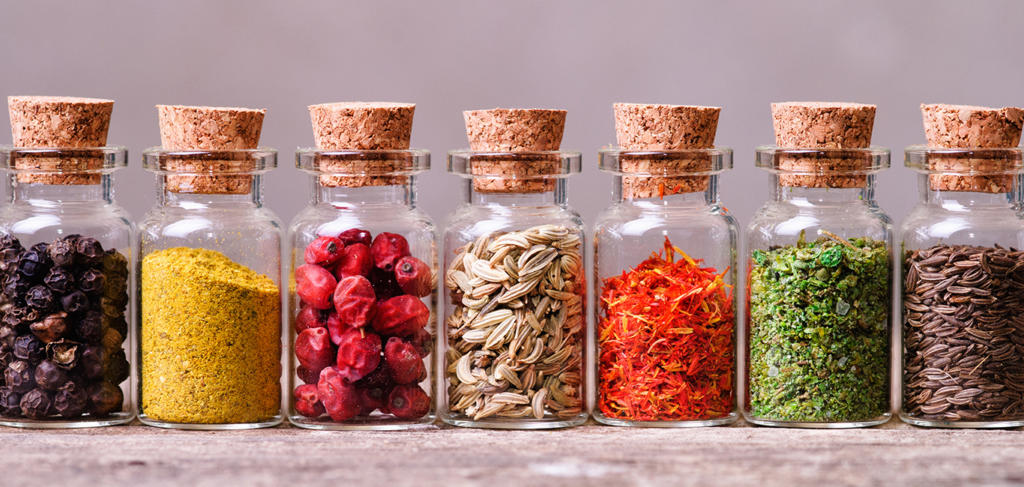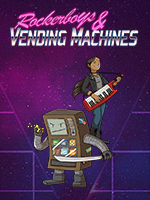Whether I’m running a familiar module again, or playing through my latest custom one-shot, there are always encounters or scenes that fall a little flat. The energy has dipped, my brain goes blank, and players are reaching for their phones or falling asleep. That’s where Flavor Rolls come in. This simple tool has been invaluable in adding excitement and unpredictability to my games. By rolling on some specially-designed D4 tables, I can inject a few fresh twists into a scene whenever I need to spice things up and captivate my players again.
The Key to a Good Flavor Roll
Now, Roll Tables are already designed to kickstart our brains with new ideas. I mean you can plan a whole campaign just by rolling on tables and connecting the dots. But Flavor Rolls aren’t about being purely random. They are designed to purposefully introduce variations into scenes to keep them fresh and tasty. Let me give you an example.
I have an encounter where the party needs to cross a bridge that leads into a fortress up in the mountains. It’s guarded by two Snogres (Snow Ogres). The party engages in combat, and it turns into a bit of a slog. After a few rounds, the excitement of combat wears off and now we’re in this rut of roll, rinse, and repeat. I could really use something to liven things up, so let’s make a Flavor Roll. I pull out a D4 and roll on the following table:
- The Snogre’s fist smashes through the bridge and it begins to collapse! In D4 ROUNDS, everyone still on the bridge will fall into the chasm below
- A pile of snow on the bridge has been covering a long length of rope. It still has strength to it.
- A third Snogre appears, wondering what’s going on. He’s bigger, meaner, and carrying a huge, jagged sword meant for a giant.
- A ring of keys falls off the Snogre’s belt and lands between the party and the Snogres. Everyone freezes, eyeing each other. Who is going to make the first move?
Each possible result changes the scene slightly. It could add a time limit to break free from combat. The rope could offer some clever maneuvering that might bypass the combat altogether. A third Snogre changes the slog tank-and-spank into more of a boss fight. And the ring of keys provides an additional objective to the scene. All demand immediate attention and are rife with potential for player creativity.
The key to a good Flavor Roll is about adding just the right amount of new ideas into a scene. You don’t want to overdo it and change the scene entirely because it may be too difficult to pivot. But each result has to be enough to make a difference. The goal is to spice up our scene and enhance the overall experience.
Including Flavor Rolls in Your Prep
A question you might be wondering is, “If those variations are so good, why didn’t you include them in the first place? Why weren’t they part of your prep?”
Well, they could be. Especially when I’m running the same module multiple times, if I have a Flavor Roll built already I could add any of the ideas into the encounter from the get-go. They are excellent ways to keep adventures feeling fresh, even if you, or your players, have been through the same dungeon a hundred times.
But it’s still good to prep a full Flavor Roll table for each scene to have at the ready, even if you use some of the ideas.
You’re already in the process of preparing and designing a fun night of gameplay for your table. You hope that everything will go smoothly and the plan you have in place will excite and thrill your players. Why not build in a lifeline or two while you’re at it? Just in case things don’t go exactly the way you planned.
Plus I don’t want to have to prepare entire contingency plans in case things go off the rails (because they will). It is hard enough to prep for one session at a time, that seeing huge swaths of “wasted prep” can be demoralizing. I’m okay if I build a D4 table that never gets used. Those are easy to make and I want to optimize my session prep as much as I can.
Flavoring Your Game As You Go
Now, even with the best of prep, the energy can still dip. Monsters can fall flat and your brain goes blank or gets tired. For all of these reasons, I might throw in a Flavor Roll mid-game to get things moving again. The last thing I want when I’m running a game is to get caught in a rut that isn’t fun for the table and so an unexpected twist jolts me and the player backs into the action.
But what does this look like?
In my prep, I have a Flavor Roll table prepared for every scene. A lot of times, they are little notes in the corner of my DM Journal or on a scrap of paper I’ve slipped in between the pages.
As the game commences and things start rolling, I try to pay attention to how I am feeling, as well as my players. I’m watching out for things like:
- Repetitive Rounds
- Distracted Players
- Scenes Overstaying Their Welcome
- My Energy Waning
- Cold Dice
- Etc…
I’m looking for trends along those lines and as soon as I see one or multiple of those scenes, I start watching for opportunities to add in a Flavor Roll.
When a moment arrives, I might announce that we’re going to make a Flavor Roll. Let the players know that I’m going to throw a twist into the scene. Even letting them see the possibilities can start to pull things back. We watch with anticipation of what the dice will decide. Other times, I might roll the dice on my own. I’ll subtly roll the D4 as the round is progressing and silently prepare to drop it in on my next turn or at an opportune moment.
Because the variations are not so far-fetched and they are specifically designed for each scene, I’m not scared of dropping something truly random in and then having to make sense of it. Especially when I’m tired, having those options in advance is such a lifesaver because I’m not thinking of these twists on the fly. I thought of them when I was fresh during my prep.
I’m also not limited to just rolling once per scene. If one twist doesn’t work, or maybe I want to build on the energy of the previous Flavor Rolls, I can roll again. Combining a collapsing bridge, a boss of a Snogre, and a length of rope could be a huge moment at the table. You never know.
And you never know if a simple fight with a pair of Snogres is all you’re going to need. That’s why Flavor Rolls are such a fun and flexible option to fit into games. If you need them, they’re right there in your DM spice cabinet, waiting to add flavor to your next encounter.


















Thank you for the article!
So do I understand correctly that for the most part you only have these premade if you run the adventure multiple times or something similar and instead you make the table up more or less on the fly as needed?
I usually have these made as part of my prep. As I’m planning a session for the first time, I’ll spend a few minutes on each scene to come up with my Flavor Rolls. In the event that I’m running a game that I’ve already run before, the work would already be done. I can make Flavor Rolls up on the fly though. Just not my preference.
I like the idea here. Could you give some more examples, or even link some of the tables you’ve made?
Sure! For example:
Players are racing across the wall of the Black Castle and are faced with 100 Brigands, standing between them and the crystal they are trying to destroy. Could turn into a bit of a slog, so I’ll include some Flavor Rolls like:
1. Volley of Arrows: The supporting army in the siege let loose a volley. Players roll DEF or take 3d6 damage (3d6 Brigands fall no matter what)
2. Grey Rangers Swoop In: A band of allied Grey Rangers arrive to help clear a path!
3. Fire Breaks out!: The brigands light a stretch of the wall on fire with burning pitch!
4. NPC Falls: A known NPC is mortally wounded and pushed over the edge, holding on by their fingers.
I’ve also used them in an ICRPG module adventure, Garden of Acid, if you want some more example: https://www.youtube.com/watch?v=nf-uOhYyCpQ